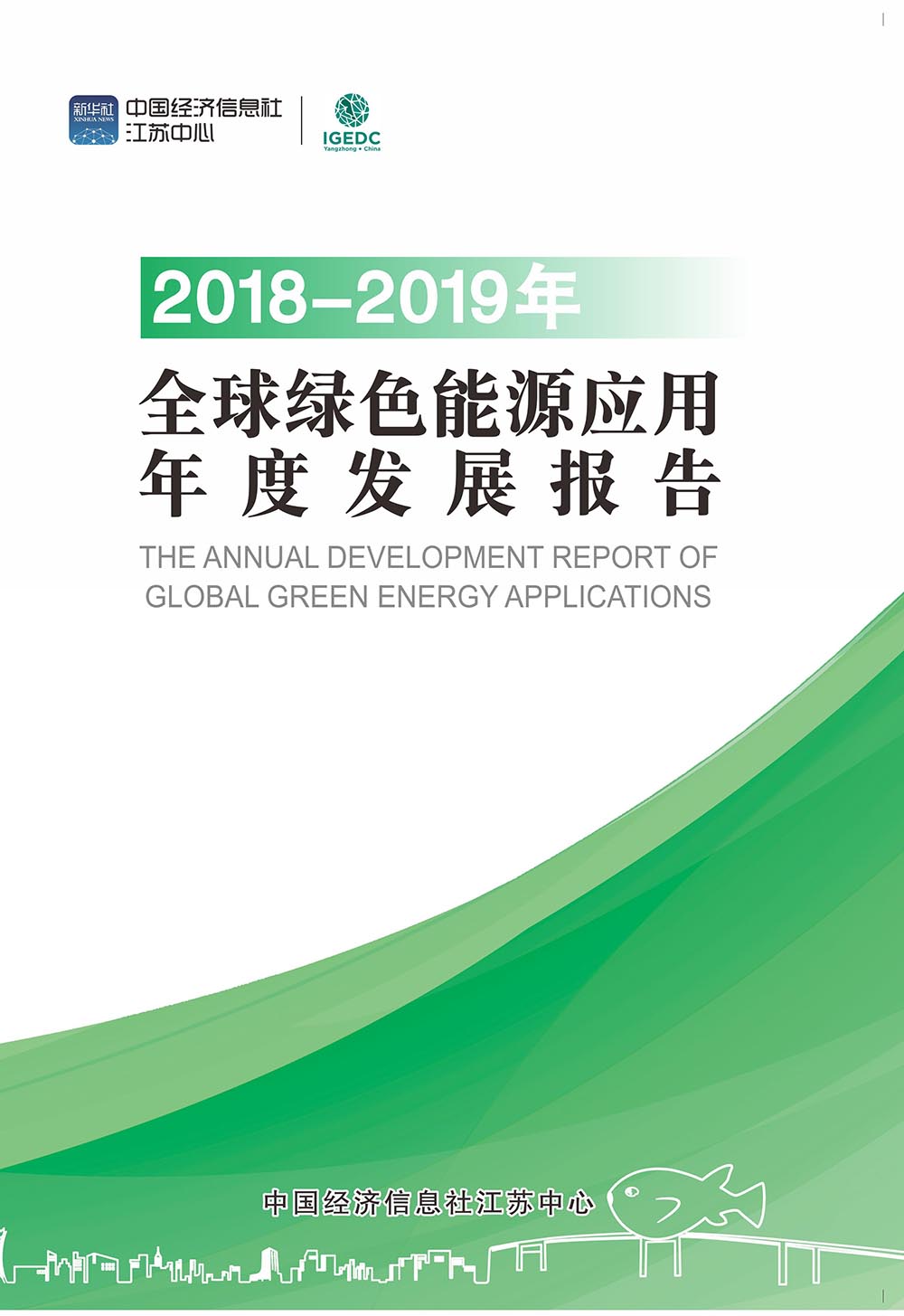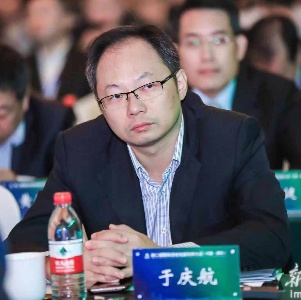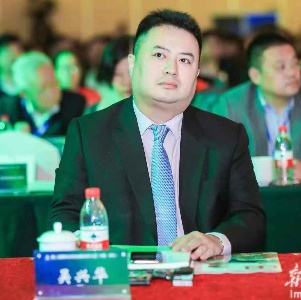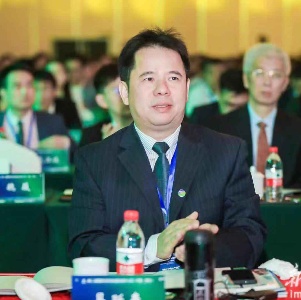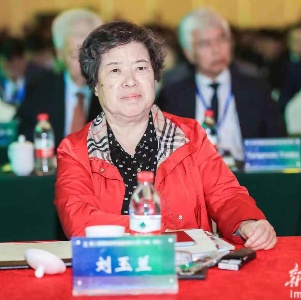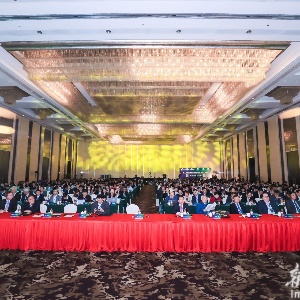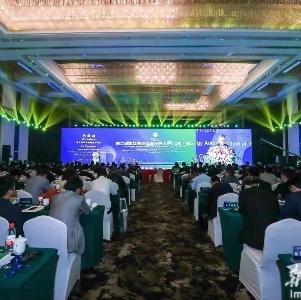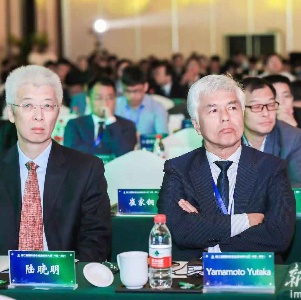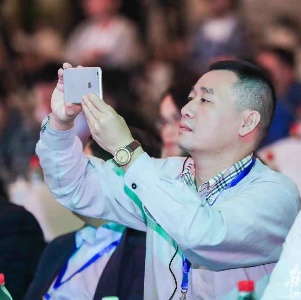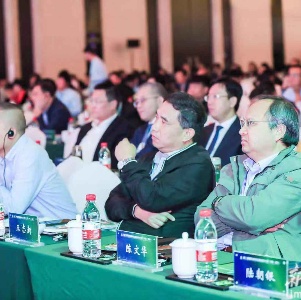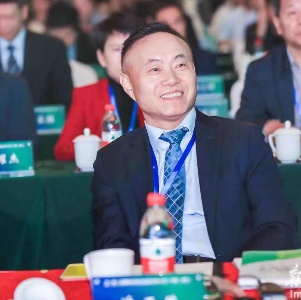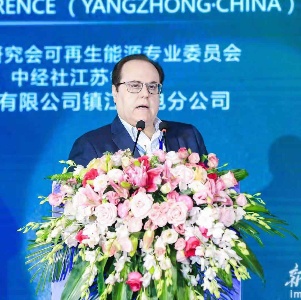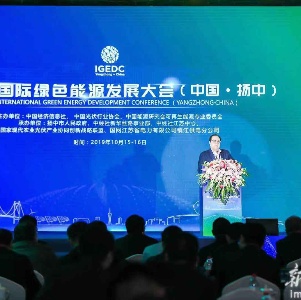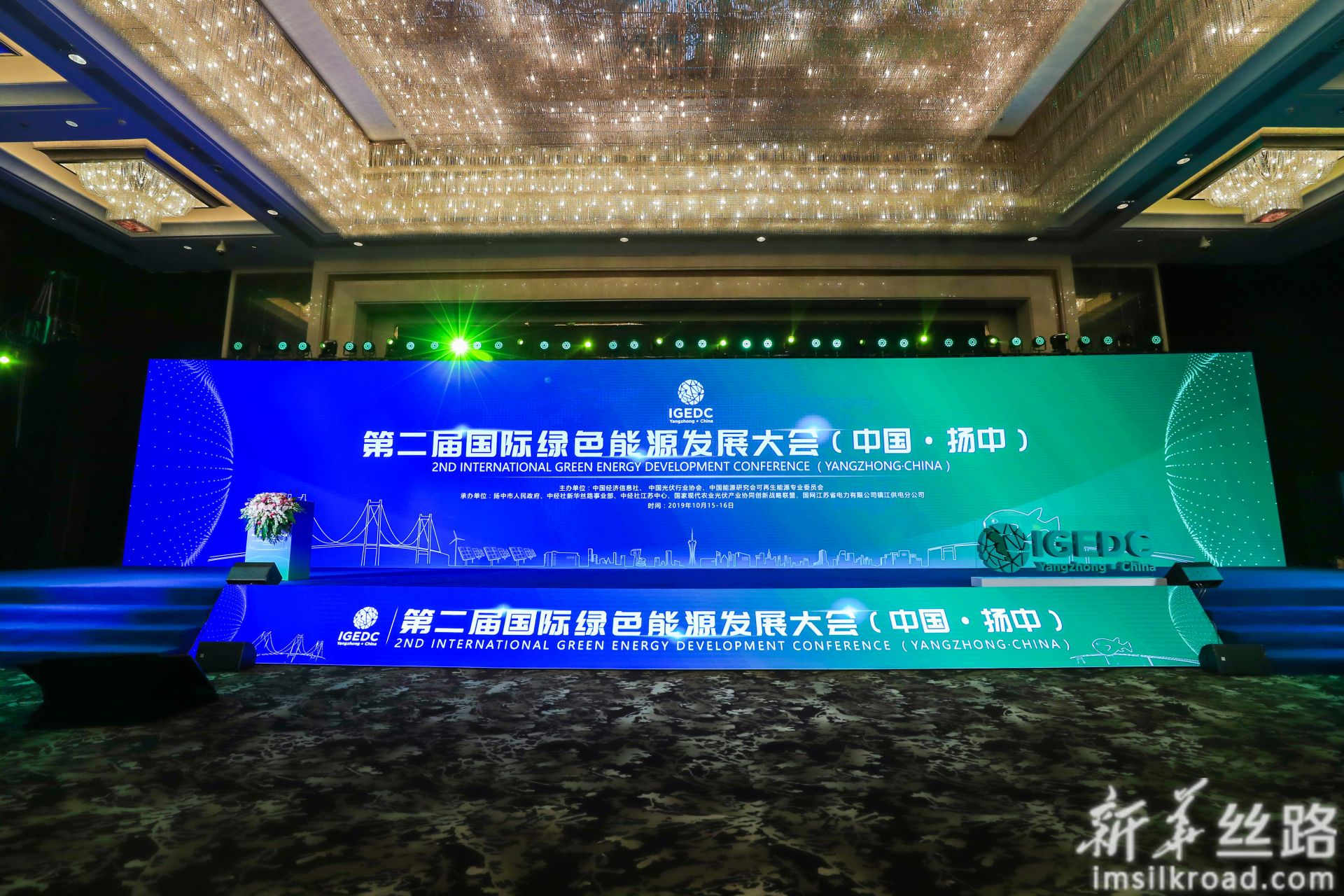
Yang Qi Host
The Second International Green Energy Development Conference is scheduled to be held in Yangzhong City, east China's Jiangsu Province in October 15-16.
Themed "global green energy application and urban high-quality development", the conference will invite related officials, experts and enterprisers to discuss the current hot spots and difficulties of green energy development, and explore new ideas, new methods, and new measures for the green energy applications. The latest global green energy technologies and practical cases will also be displayed at the conference.
Yangzhong, an island city in the lower reach of Yangtze River, is setting a good example for the urban transformation towards green development and ecological civilization construction, thanks to its efforts in promoting green energy for high-quality development in the recent years.

Yang Qi Host
Check out the video and learn more about Yangzhong City
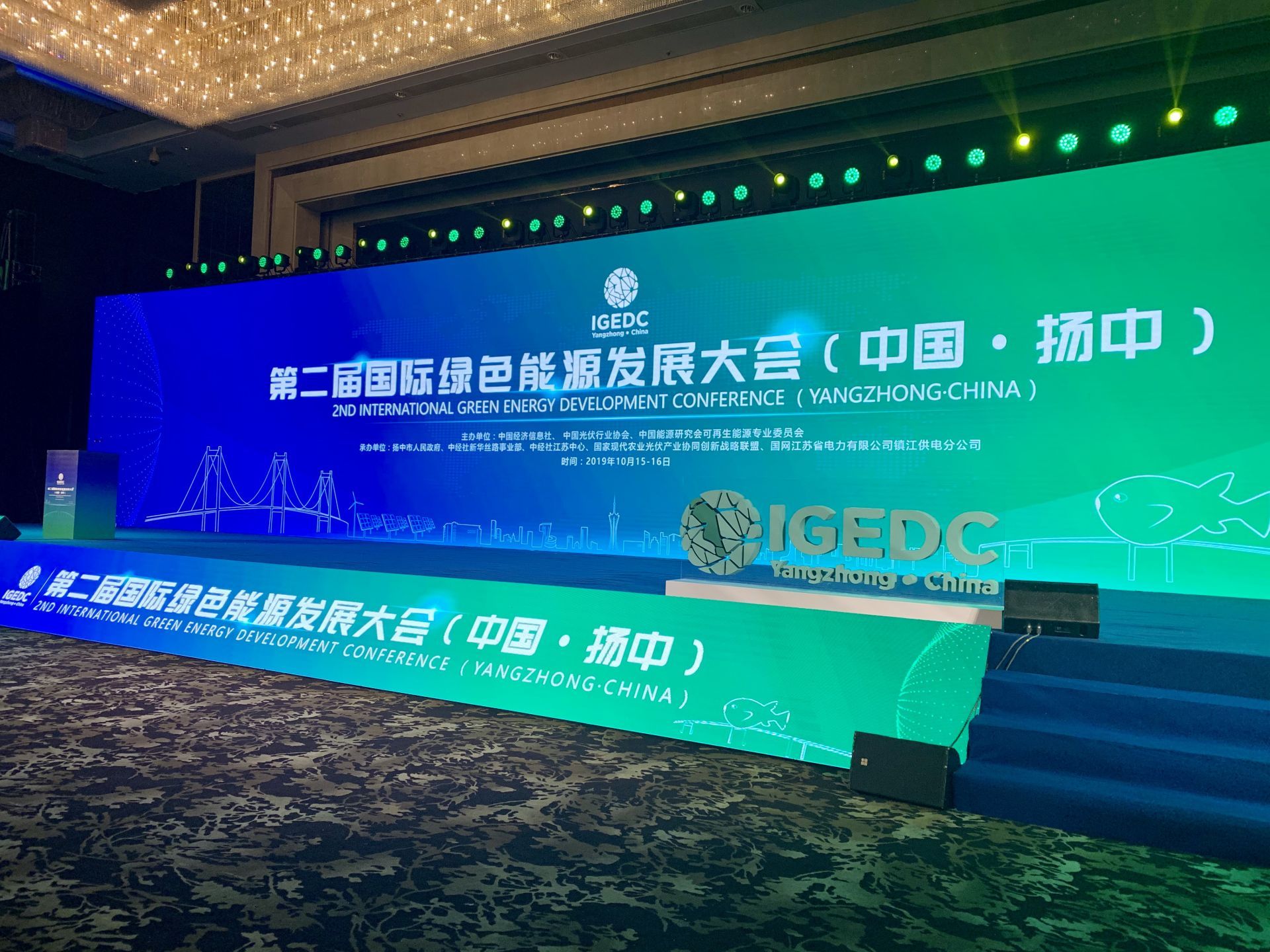

Yang Qi Host
The main venue of the 2nd International Green Energy Development Conference.


Yang Qi Host
Welcome to Yangzhong, the pearl of the Yangtze River! Thelive coverage of the 2d International Green Energy Development Conferenceis about to begin.

Yang Qi Host
Experts and entrepreneurs from Chinaand abroad in green energy sector are gathering together to discuss “global green energy application and urban high-quality development”.

Yang Qi Host
Shi Zhengrong, Chairman of the 2nd International Green Energy Development Conference Organizing Committee, Academician of the Australian Academy of Technological Sciences and Engineering, is giving a speech.
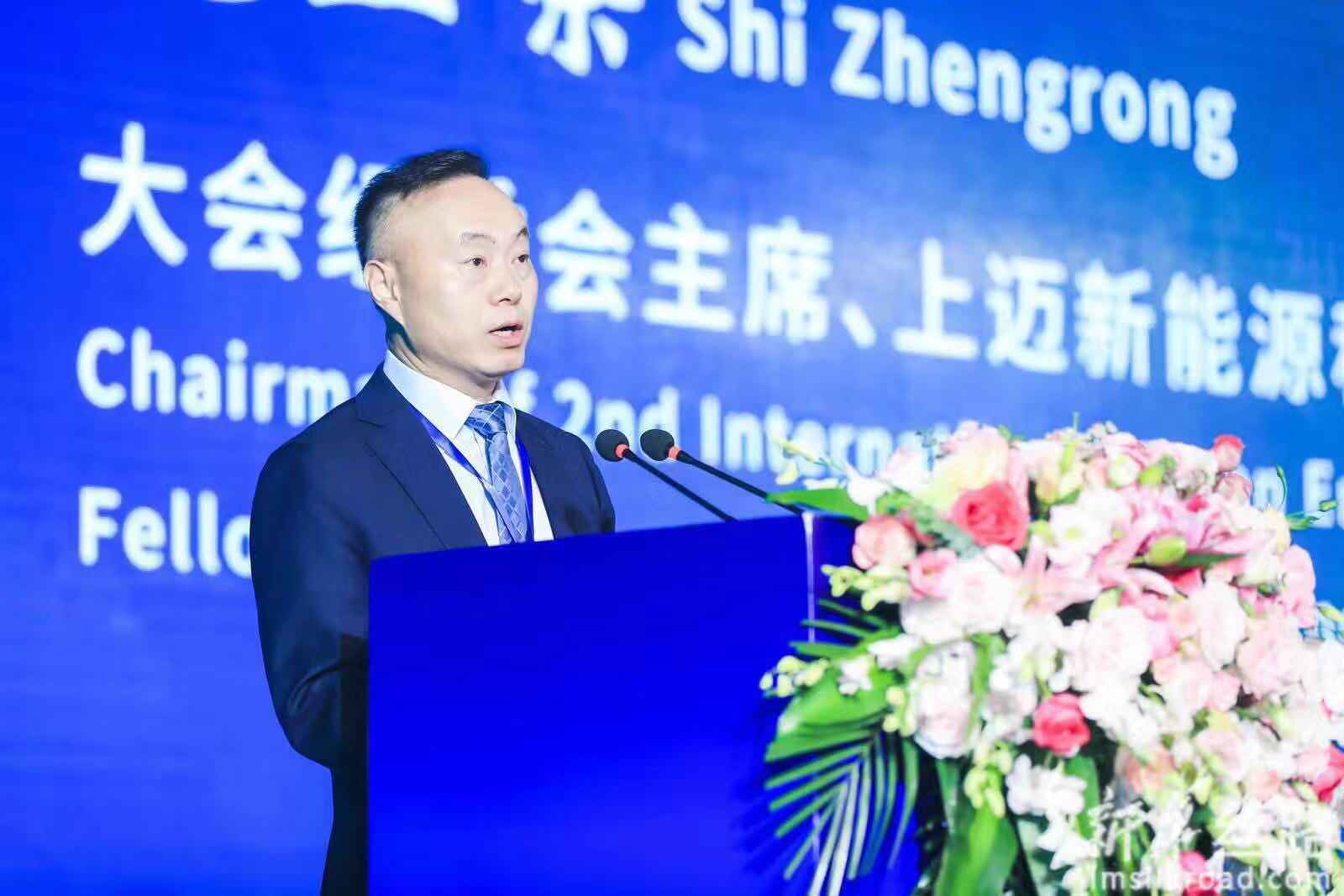

Yang Qi Host
Shi Zhengrong:
Yangzhong, as a city approved by National Energy Administration to build a model city with a high proportion of new energy application, is determined to build a clean, low-carbon, safe and efficient high-renewable energy production and consumption model.
The city aims to realize zero coal consumption on its main island and 100 percent green residential power consumption by 2020 and achieve zero coal consumption in the whole city and 100 percent renewable energy with zero carbon-dioxide emission by 2030.
Yangzhong’s photovoltaic industry started in 2004, and now there are more than 40 photovoltaic enterprises, 27 of which have main business revenue of 20 million yuan or above. It has also formed a relatively complete industrial chain. Photovoltaic panels have been installed on the roofs of nearly 200 factories, public institutions and more than 3,000 households, with a total installed capacity of about 152MW.

Yang Qi Host
Shi Zhengrong:
This conference will focus on the latest practices in the construction of new energy cities, look forward to the high-quality development of global green energy, demonstrate the new technologies and applications of green energy in the world, and promote the international cooperation in green energy development along the Belt and Road.
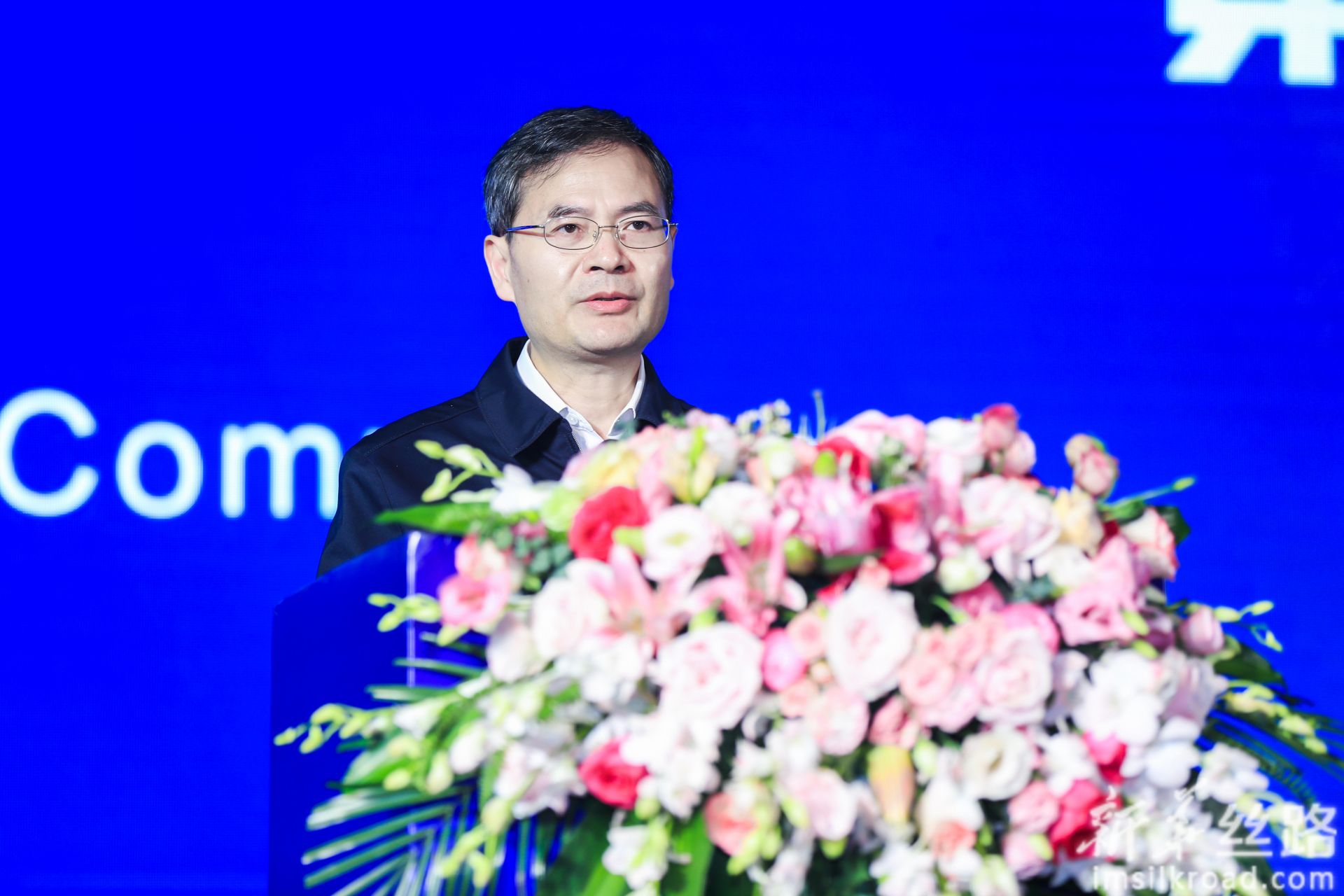

Yang Qi Host
Hui Jianlin, Secretary of CPC Zhenjiang Municipal Committee, is giving a speech.
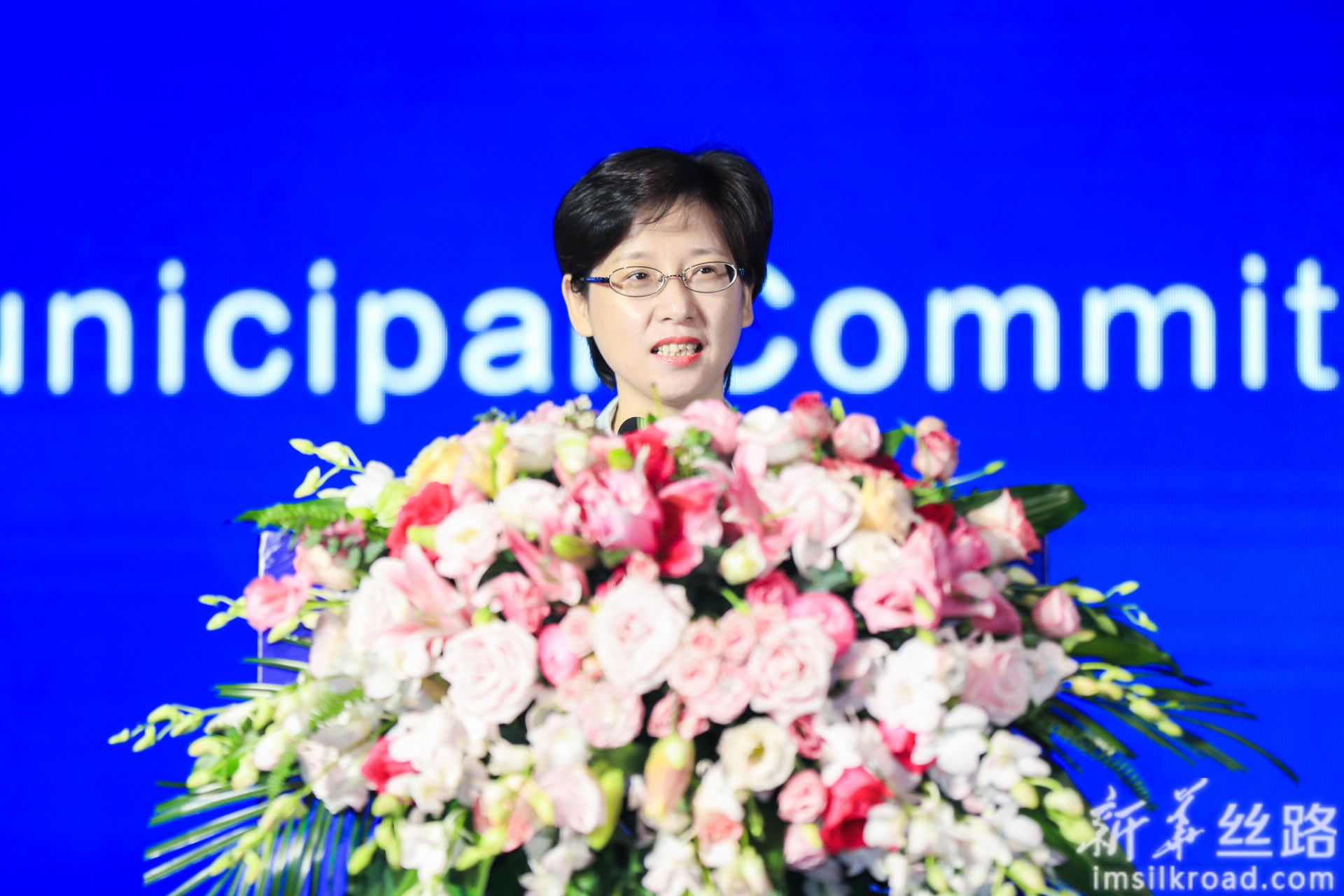

Yang Qi Host
Yin Min, Secretary of CPC Yangzhong Municipal Committee, is giving a speech.

Yang Qi Host
Yin Min:
We are committed to sharing the “sunshine benefits”, which not only helps protect our environment, but also creates the wealth. We vigorously promoted the “Golden Roof” program, focusing on the PV application scenarios including industrial plants, public institutions, residential roofs, green travel, and so on. More than 200 industrial and commercial rooftop PV projects have been completed and more than 6,300 homeowners have installed the PV facilities on their roofs. We actively explore the promotion and application of green energy, such as fishing and PV integration. The annual average value of the power generated by the Tongwei Huantai 30MW fishing and PV integration project is about 35 million yuan, saving about 11,000 tons of standard coal. We vigorously carry out “poverty alleviation through PV projects” and shared the dividend of green energy reform. We have installed PV power generation devices for 300 poor households free of charge, which helps the poor families each increase an income by about 3,000 yuan per year. We have solidly carried out comprehensive ecological and environmental management to improve our environment and enhance the happiness and satisfaction of the people.

Yang Qi Host
Yin Min:
We are committed to strengthening the innovation driven method. Yangzhong is one of the pilot cities for the incremental power distribution business in China and sets up the first distribution company with sales qualifications in Jiangsu Province. The company has sold 156 million kWh of electricity on a market-oriented basis, of which 116 million kWh of electricity are generated from the clean energy. We strengthen cooperation with universities, research institutes, such as the North China Electric Power University, to actively explore the “cross-industry integration” of engineering electrical and PV industries. We are continuing to promote application of the cutting-edge technologies such as energy conservation, low carbon, energy storage, in the fields of micro grid and energy Internet.

Yang Qi Host
Yin Min:
We are committed to promoting “integration of industry and city”, which not only improves the industrial energy level, but also optimizes the urban form. We have identified the PV industry as the leading industry for development, and built a relatively complete industrial chain such as silicon material purification, ingot slicing, component packaging, and integrated application. The total number of the PV enterprises in Yangzhong city is more than 40, and the output value of the PV industry has accounted for 40 percent of the city's industrial economy. We encourage enterprises to introduce foreign investors and strengthen cooperation with the domestic peers. We encourage them to actively participate in the formulation of national industry standards, accelerate the pace of going global, and increase the development of emerging markets such as Asia-Pacific, Latin America and the Middle East, and strive to promote international exchanges and cooperation in the fields of ecological development and new energy industries. Yangzhong has built 431,900 square meters of new green buildings, promoted 193 new energy vehicles, and launched 20 new energy buses.

Yang Qi Host
Xu Yuchang, Chairman and President of China Economic Information Service (CEIS), is giving a speech.

Yang Qi Host
Xu Yuchang:
Today, it is my great honor to be here with global experts on green energy development, government officials committed to new energy to take the road of high-quality and sustainable development, and friends concerned about green energy and high-quality development to discuss about green energy development.
Developing green energy on basis of China’s status quo is an important strategy for China to improve its energy structure, ensure energy security and promote the construction of ecological civilization. Meanwhile, it has become a worldwide consensus to promote sustainable development by means of green energy. Especially in energy cooperation, a key area of the Belt and Road construction, countries attach more and more importance to green and low-carbon economy and prioritize the development and utilization of clean energy.
Under the general trend of global green energy development and in the background of Yangzhong’s "ecological city" "empowered" by new energy, China Economic Information Service of Xinhua News Agency has worked closely with Yangzhong government in recent years to launch a grand event for the green energy industry and promote the development of the industry. After the First International Green Energy Development Conference was successfully held in 2017, China Economic Information Service of Xinhua News Agency and Yangzhong once again joined hands to hold the Second International Green Energy Development Conference this year based on the deepened cooperation and the establishment of a strategic cooperation relationship. During the conference, China Economic Information Service will issue the the Global Green Energy Application Development Report and a Report on Belt and Road Green Energy Investment Environment.
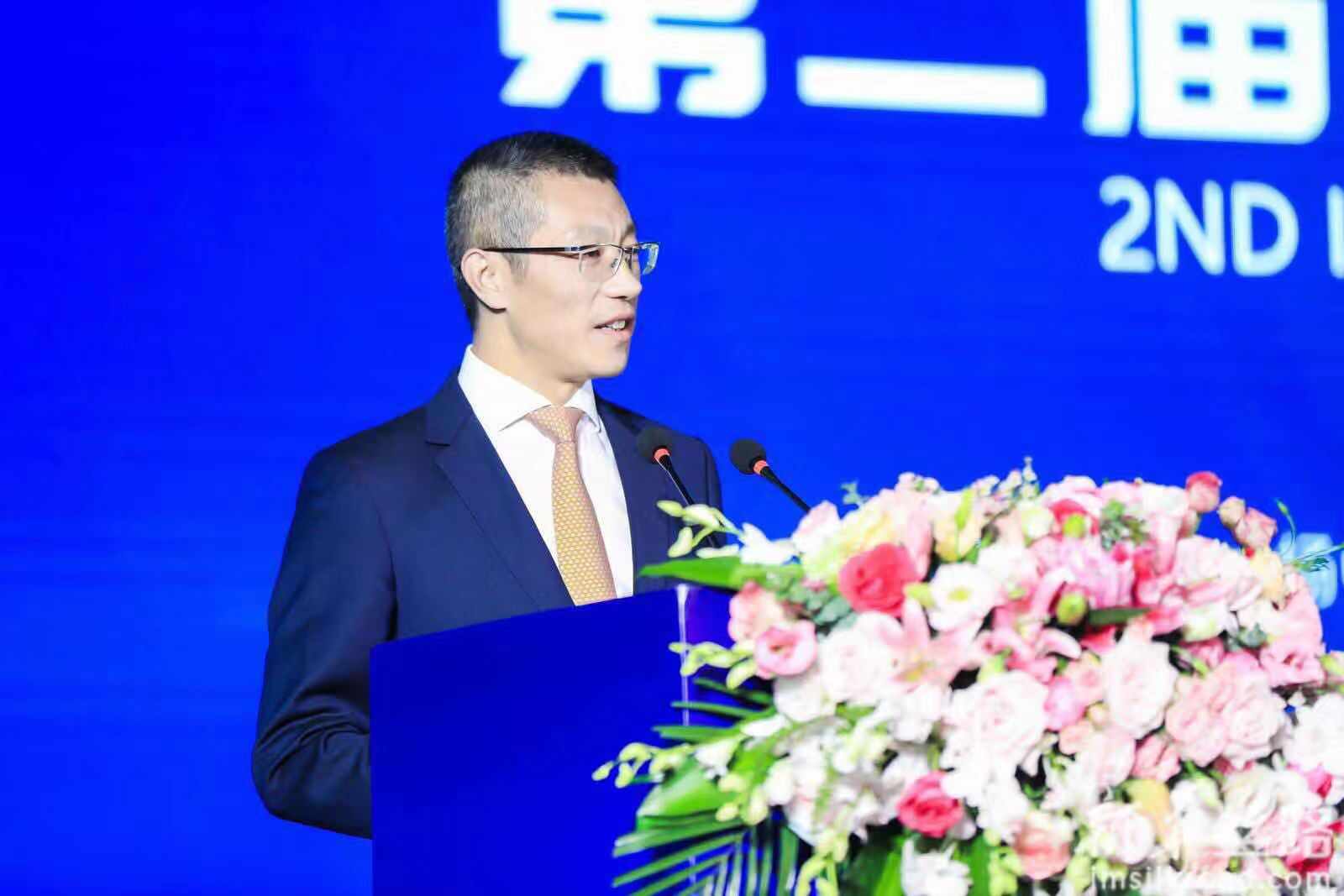

Yang Qi Host
Xu Yuchang:
Facing the future, China Economic Information Service will give full play to its advantages in the following three aspects to further promote the application and development of green energy.
First, reduce information asymmetry and help green energy enterprises avoid risks in international cooperation by making full use of information collection and international market research of Xinhua Silk Road, a national information service platform for the Belt and Road under the China Economic Information Service, as well as the energy industry research team of Xinhua News Agency, a national high end think tank, to contribute to the steady progress of Chinese green energy enterprises in overseas markets.
Second, facilitate information sharing and forge ahead the wide spread of the green energy cooperation along the Belt and Road. In June this year, we jointly launched the Belt and Road Economic Information Partnership (BREIP) with over 30 news agencies, business associations and information institutions around the world. With the ecological advantages of BREIP, we will transmit information concerning the Belt and Road and green energy to professional institutions and users in a more convenient, effective and accurate way, which encourages international resources matching and cooperation in green energy projects.
Third, promote information dissemination, advocate sustainable development and green concept, and build a green silk road. We have expanding "circles of friends" at home and abroad in economic information that are all over the world and among the political, academic, business and research fields. With the help of these friends, we will effectively spread the concept of green development, build a bridge of communication between China and the world, reach consensus on sustainable development, and create a community with a shared future in green energy development.

Yang Qi Host
Xu Yuchang:
Dear friends, it is the destined trend to develop green energy. At present, China's new energy enterprises are actively entering overseas markets, and leading foreign green energy enterprises also hope to get a share in the Chinese market. China Economic Information Service will work with all of you to promote green energy, keep water and mountains “green”, and share a green earth!

Yang Qi Host
Wang Bohua, Vice Chairman and Secretary General of China Photovoltaic Industry Association, is giving a speech.

Yang Qi Host
Wang Bohua:
Among green clean energy, photovoltaic power generation is playing an increasingly important role in the new round of energy transformation due to its clean, safe and abundant resources.
In the five years since 2013, the total new photovoltaic power generation installations worldwide has increased by 1.8 times, with the cumulative installed capacity increasing from about 140GW to 500GW, which is 3.5 times that of five years ago. Since the end of 2013, the average initial investment cost of photovoltaic power generation projects has dropped by more than 55 percent.

Yang Qi Host
Wang Bohua:
In China, the photovoltaic industry has made great progress in the past 13 years since the Renewable Energy Act came into effect. Over the past 13 years, China's global share of polycrystalline silicon production has risen from 0.3 percent to 58.1 percent; China’s share of world’s photovoltaic cell module production increased from 11 percent to 72.8 percent, ranking first in the world for 12 consecutive years; China’s share of world’s new photovoltaic installations increased from 0.36 percent to more than 40 percent, ranking first for 6 consecutive years; China’s share of world’s accumulated photovoltaic installed capacity increased from 1.35 percent to over 30 percent, ranking first for 4 consecutive years.
China has made indelible contributions in effectively promoting global photovoltaic power generation technology innovation and rapid cost reduction, and has achieved remarkable results.
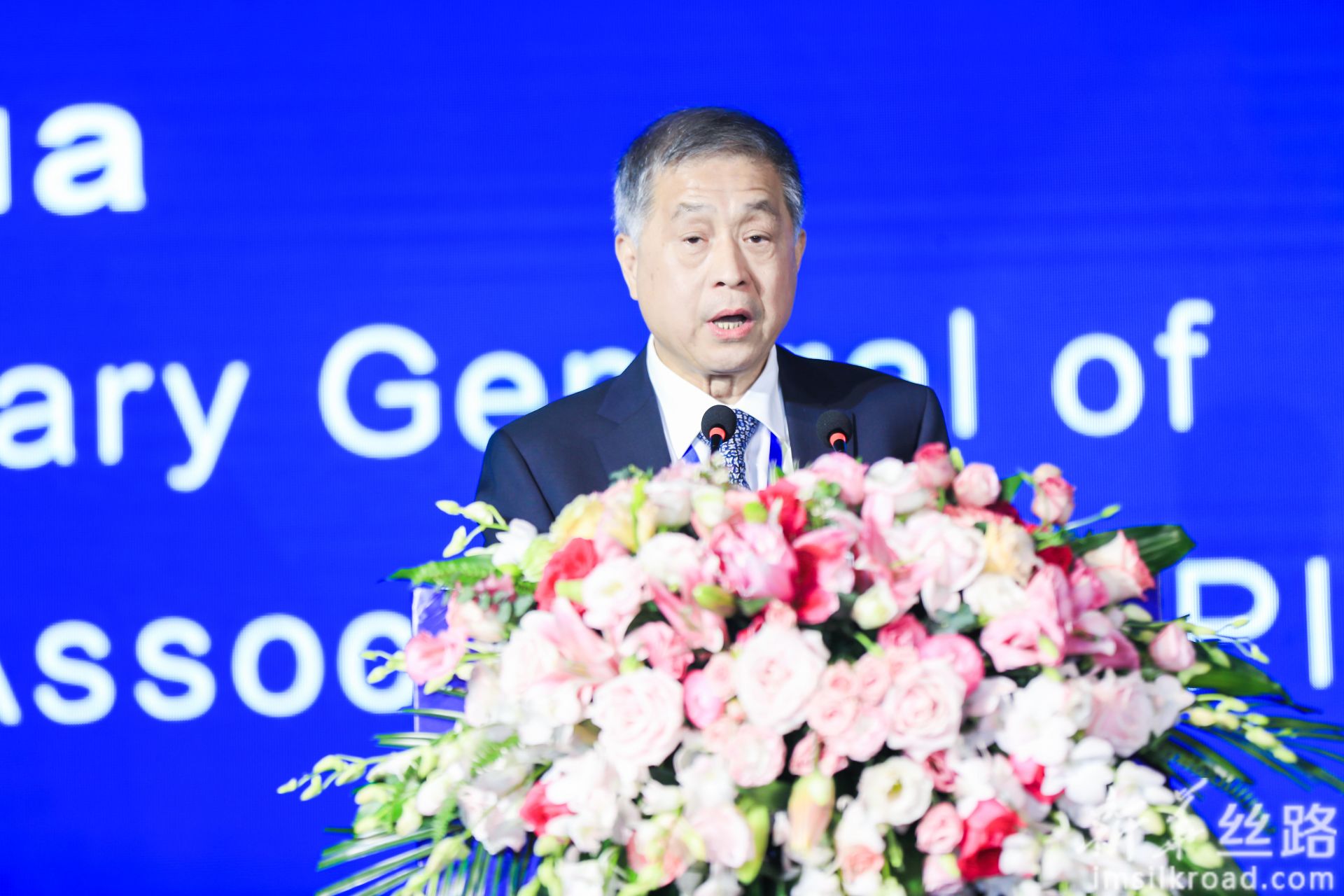

Yang Qi Host
Wang Bohua:
In the first half of 2019, the global photovoltaic market maintained a stable development trend, with a steady growth in industrial scale and a global installed capacity of over 47GW.Driven by the overseas market, China's major photovoltaic product manufacturers still saw the production and sales increasing in the first three quarters of 2019. From January to August of 2019, China's poly-silicon production reached 214,000 tons and the component production about 63GW. Of these, the export volume of components stood at about 47GW, accounting for about 75 percent of the total production.
Looking ahead, it is expected that green energy will play a bigger role in energy transformation through its integrated and complementary development and efficient and intelligent use. As one of the main clean energy, photovoltaic power generation should develop in coordination with other forms of energy, which is also the direction that we in the industry should actively explore and work together towards in the next step.
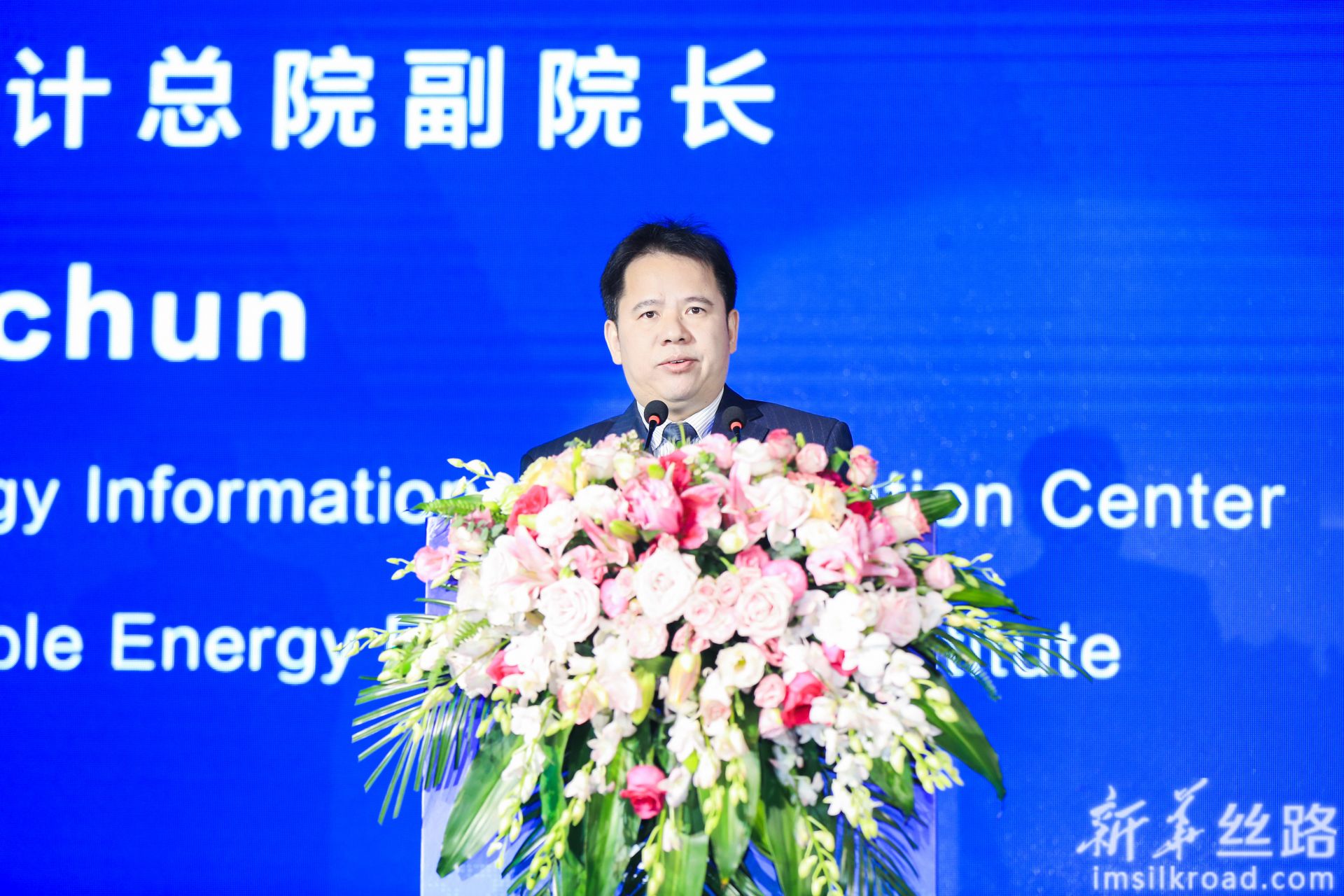

Yang Qi Host
Yi Yuechun, Director of the National Renewable Energy Information Administration Centre, Vice President of China Renewable Energy Engineering Institute, is giving a speech.
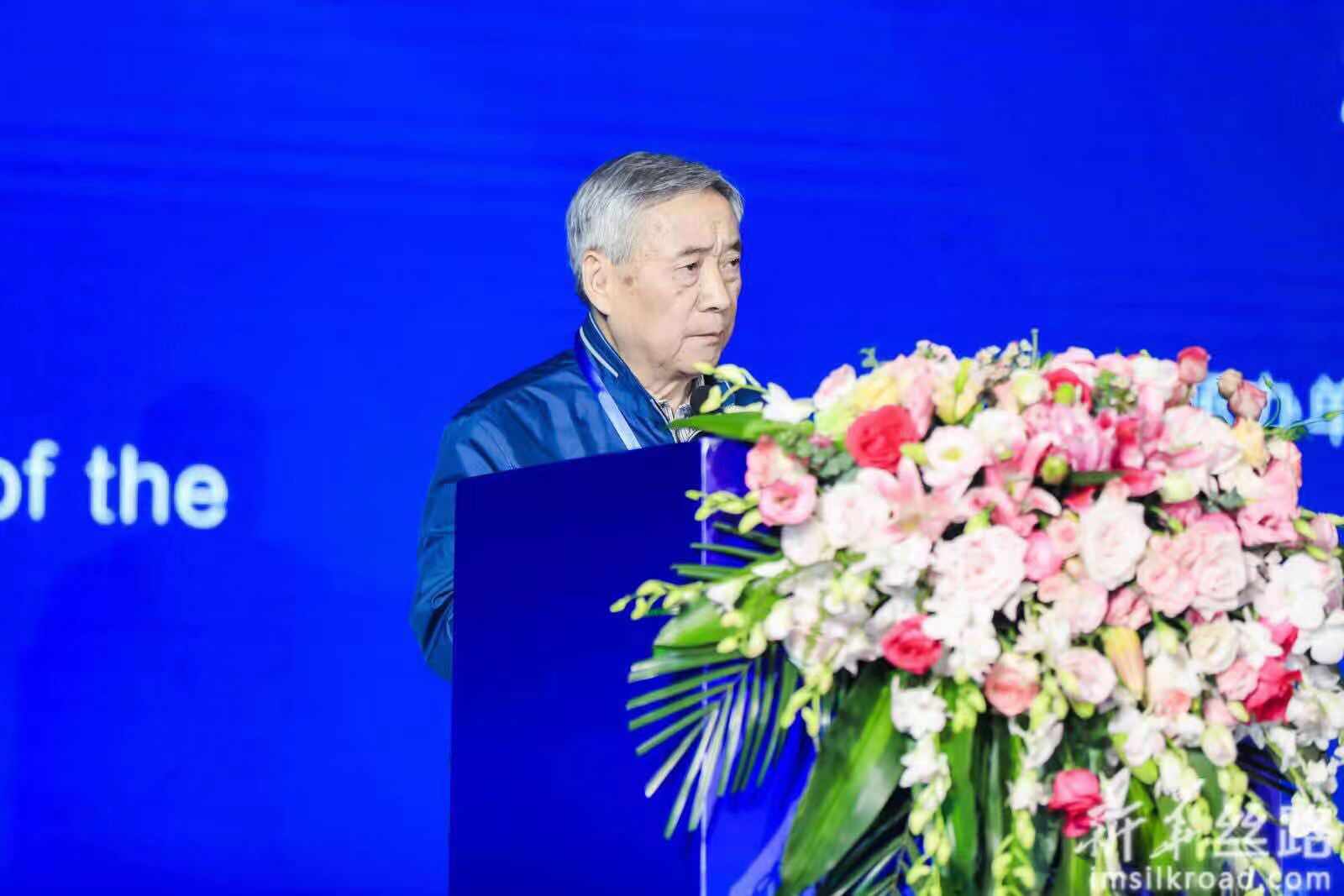

Yang Qi Host
Xu Dingming, Former Counsellor of the State Council, Former Director General of the National Energy Administration of the National Development and Reform Commission, is giving a speech.

Yang Qi Host
Xu Dingming:
As Chinese people have just celebrated the 70th anniversary of the People's Republic of China, I believe the hosting of the Second International Conference on Green Energy Development is of special significance.
Since the initiation of reform and opening up, China has witnessed rapid development of renewables dominated by solar and wind power, scoring remarkable achievements. As shown in last year's report of International Renewable Energy Agency, during 2008-2018, China's wind power generation grew 22 folds, and its PV power generation increased nearly 700 folds. During the same period, global PV power generation only grew 33 folds. PV industry represents another shining name card of Chinese people shown to the world. According to data of relevant authoritative institutions, China has topped the world for six consecutive years in terms of newly installed PV capacity, and ranked first for four consecutive years in terms of accumulated installed capacity.

Yang Qi Host
Xu Dingming:
China's PV enterprises have made indelible contributions to global PV industry innovation and cost reduction.
We can envision a future with diversified energy resources, localized energy sources, intelligent energy technology, digital energy life, decentralized energy production, shared energy network, efficient energy utilization, convenient energy use, universal energy services, and low-carbon energy economy.
To develop energy in the future, first, we should push for energy revolution in all aspects; second, we should take proactive measures to scrap the use of coal; third, we should be active in transcending the age of oil and gas; fourth, we should embrace a future of zero emission; fifth, we should work to realize the in-depth integration of industrialization and informatization.
Digitization is empowering the ongoing energy revolution and will serve as the most fundamental tool and capacity for any enterprises to stay viable.
We cannot go without private enterprises to advance China's energy revolution, let alone to develop China's renewables.
Private enterprises are the pioneer, entrepreneurs, innovators, leaders and backbone of China's renewables field.
China's economy has shifted from fast growth to quality development. As such, China has entered a new stage of quality development.
PV industry should value quality as how we value life.

Yang Qi Host
Release of the Annual Development Report of Global Green Energy Applications (2018-2019) by Chen Xixi, Director of CEIS Jiangsu Economic Research Center.

Yang Qi Host
Chen Xixi:
As the major institution of Xinhua News Agency engaged in offering economic information, CEIS is an economic information think tank service agency in China with the largest business scale, the widest range of services, and the strongest overall strength. Backed up by Xinhua News Agency's 180-plus offices across the globe, CEIS works to follow and study the developments of green energy worldwide. Today, on behalf of CEIS of Xinhua News Agency, I will release the Annual Development Report of Global Green Energy Applications.
According to the report, since the beginning of 2018, under the influence of energy policy shifting, industrial transformation, technological innovation, and other factors, global green energy development has entered a new stage of adjustment and transformation, which is more efficient, clean and diversified.

Yang Qi Host
Chen Xixi:
The report shows the following features and trends in global green energy application and development:
First, Global green energy transition is proceeding at a faster pace despite twists and turns, and 65 countries/regions have set the target of realizing 100 percent green power utilization
In recent years, global green energy transition has suffered some setbacks. In 2018, since some countries/regions did not release new alternative policies on green energy development, the number of countries/regions with green energy development goals dropped to 169, decreasing 10 compared with 2017; 111 countries/regions released subsidy policies, decreasing one compared with 2017.
However, it is good to see that amid intensified impacts of climate change, major countries and international organizations have attached great importance to green energy utilization and development, and made greater efforts in planning to push for the green, structural transformation of global energy at a faster pace despite twists and turns.
In 2018, 65 countries/regions set up the goal of 100 percent green power utilization, 8 more than in 2017; 135 countries/regions formulated policies and regulations for green energy development in power generation and utilization; 70 countries and regions rolled out relevant policies in transportation to push for the utilization of green energy vehicle and other green transportation technologies; 44 countries and regions worked out policies on carbon pricing or trading.
As a leading player in green energy utilization and development, China is gathering the spotlight for its policy support for green energy. According to the Clean Energy Elimination Action Plan (2018-2020) issued by the National Development and Reform Commission and National Energy Administration, China will work to ensure that the average wind power utilization across the country to reach world’s advanced level and the utilization rate of photovoltaic power to be higher than 95 percent by 2020. In the U.S., nearly 100 cities have promised to realize 100 percent use of renewables. Among those, Burlington and other five cities have delivered the goal. EU has set the goal of getting 32 percent energy from renewables in 2030 and promised to realize zero emission in 2050.
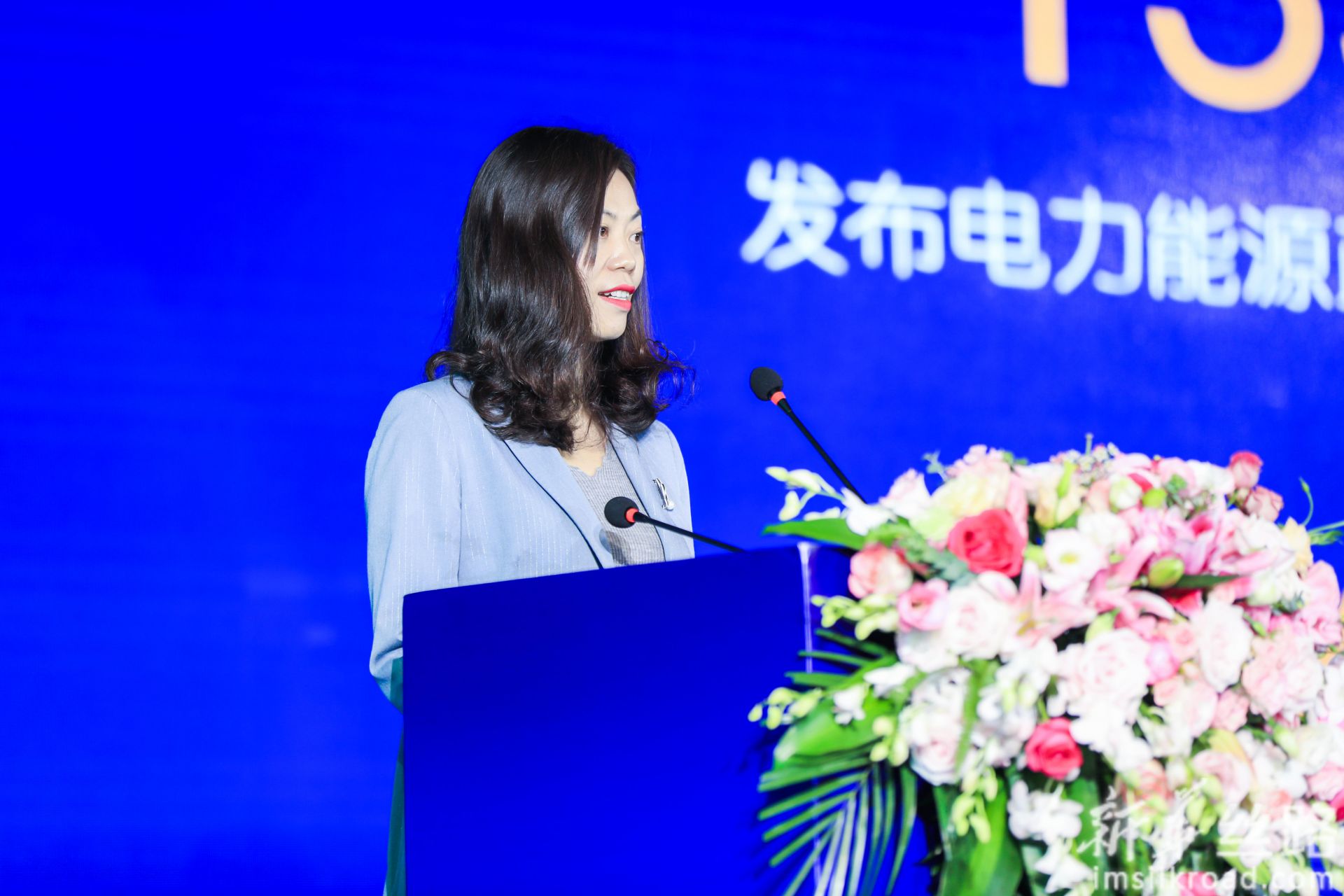

Yang Qi Host
Chen Xixi:
Second, Green energy has quickly penetrated into global energy system, together with stable rise in installed capacity and its proportion in total consumption
Currently, green energy has accounted for a large share in global energy system and gained a key position worldwide. By the end of 2018, over 90 countries/regions had over 1GW installed capacity of renewables, and 30-plus countries/regions have reached 10GW in terms of installed capacity.
In terms of supply side, in 2018, the installed capacity of green energy (including hydropower) reached 2,350.75GW, accounting for one third of global total; newly installed capacity stood at 171GW, a year-on-year increase of 7.9 percent, featuring a sound increase momentum; as such, green energy has become part of global energy system at an accelerating speed.
When it comes to demand, the share of green energy in global energy consumption has shown steady rise. In 2018, global green energy consumption (excluding hydropower) maintained fast growth at a rate of nearly 15 percent; the amount of green energy consumption accounted for some 4 percent in global energy consumption, up 0.4 percentage point from the previous year.
It is estimated that in the coming five years, green energy will account for a higher proportion to meet global energy demand; by 2023, green energy will meet 12.4 percent of the world's total energy demand.

Yang Qi Host
Chen Xixi:
Third, PV market expands quickly; Asia is a leading player; wind power commercialization proceeds steadily
During the past decade, global PV market developed at a fast rate, with accumulated installed capacity increasing from about 15GW in 2008 to 505GW in 2018; in 2018, the newly installed PV capacity reached about 100GW. Currently, 32 countries have over 1GW of accumulated installed PV capacity; among those, eight countries have a capacity of over 10GW, and four over 40GW.
China, India and other Asian countries are leading players in terms of global PV growth. Among the top 10 countries in terms of newly installed PV capacity in 2018, four were from Asia, namely China, India, Japan, and Korea, with a total newly installed capacity of 64.3 GW, accounting for over half of global total newly installed capacity.
Globally, wind power realized steady growth, with sustained increase in total installed capacity; by the end of 2018, the installed wind power capacity stood at 591GW, up 9.4 percent. In the coming five years, global wind power industry will grow at an average rate of some 2.7 percent, with over 300GW of newly installed capacity, showing a promising prospect.

Yang Qi Host
Chen Xixi:
Fourth, China has become a core driver of global green energy development and a key leader of green energy technology
At this point, China has become a core driver of global green energy development and a key leader of green energy technology. In 2018, China led the world in terms of newly and accumulated installed PV capacity, newly and accumulated installed wind power capacity, and total investments in renewables; China owned 29 percent of global green energy patents, emerging as one of the powerhouses in green energy development worldwide.
In 2018, in Shanghai and Shenzhen stock markets, 81 listed solar and wind power enterprises saw steady increase in gross revenue, which stood at 567.1 billion yuan, up 8.8 percent. From 2016 to the first half of 2019, in the field of solar and wind power generation, 16 enterprises launched IPO in Shanghai and Shenzhen, with Jiangsu New Energy, Shenzhen S.C. and Mingyang Smart Energy raising funds over 1 billion yuan.
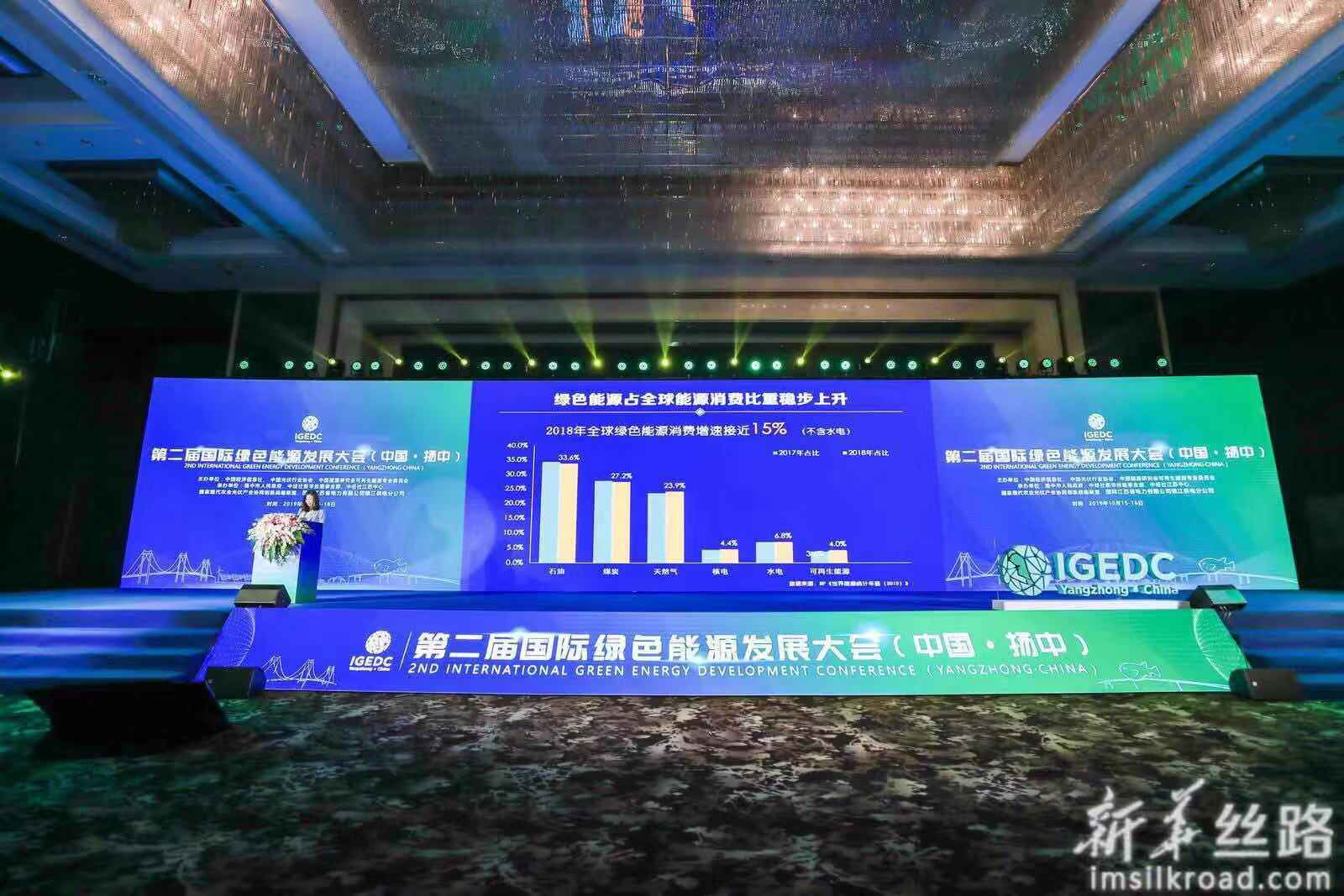

Yang Qi Host
Chen Xixi:
Fifth, Yangzhong is working to build a model city with high proportion of new energy, and enhance innovation capacity, vitality and openness of PV industry
As a model city with high proportion of new energy and the only county-level municipality in China boasting a whole PV industrial chain, Yangzhong is committed to developing a model featuring clean, low-carbon, safe and efficient renewables production and consumption. To date, Yangzhong has built PV projects with total installed capacity of about 191 MW, and is home to over 40 PV enterprises of various types; it has shaped a relatively complete PV industrial chain consisting of silicon purification, ingot casting slice, modular package, and integrated application. In 2018, the PV industry in Yangzhong recorded sales 12.7 billion yuan, accounting for over 21 percent of the city's industrial economy.
Since the beginning of 2018, Yangzhong has made great efforts in technological innovation of green energy, worked to explore new paths of PV-based poverty reduction, and embraced the new opportunities brought about by the Belt and Road Initiative to go global; the city has hosted the International Conference on Green Energy Development, built a PV museum, and become a sister city to Livingston, Australia, seeking to boost international exchange and cooperation in PV industry, enhance the innovation capacity, vitality and openness of PV industry, and build a model city with high proportion of new energy and high quality.

Yang Qi Host
Chen Xixi:
The report points out that China is improving its green energy policies and industrial system; however, China still faces some challenges: the green energy power generation system is weak in integrating with the grid and in safety protection, adding to operation risks of grid; green energy enterprises find it difficult to raise fund, which hinders the innovation of industrial technology and application products; the undesirable local resource conditions and operation environment in wind and solar power generation lead to the rise of "non-technology costs"; the policy impacts caused by the decline in "531 PV new policy" subsidy are gathering; the services offered in the operation and maintenance markets of green energy should be improved.
Dear guests, we believe that with the China's supporting policy in environmental protection and energy, and the joint efforts of those in the industry, surely China will make breakthroughs in green energy utilization and development, and lead the world in energy transition.
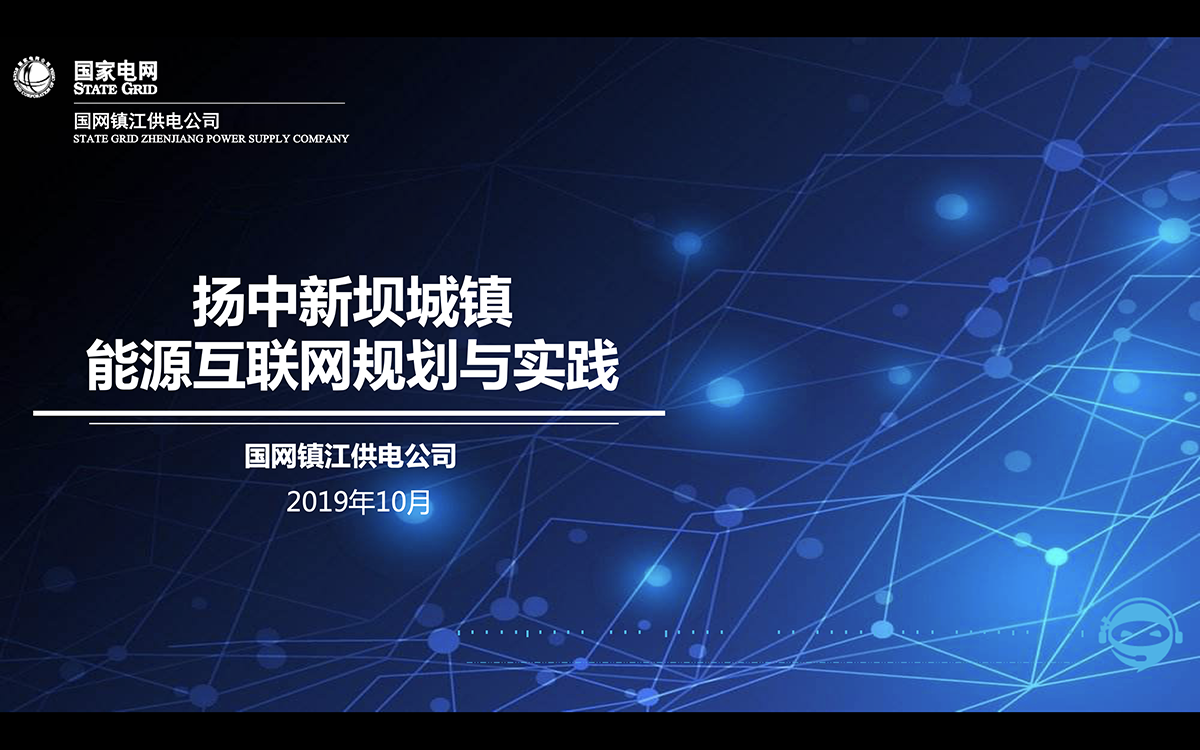

Yang Qi Host
Release of the Planning of the Urban Energy Internet Demonstration Zone in Xinba Town of Yangzhong City by Zhang Ziyang, Vice General-Manager of State Grid Zhenjiang Power Supply Company

Yang Qi Host
Zhang Ziyang:
Located in Yangzhong, with the south bordering the Yangtze River, Yangzhong Xinba Urban Energy Internet Demonstration Zone covers an area of about 34 square kilometer.
The program will construct a pilot demonstration zone, where electricity accounts for more than 50 percent of terminal energy consumption and power generated by clean energy accounts for more than 50 percent of electricity supply.
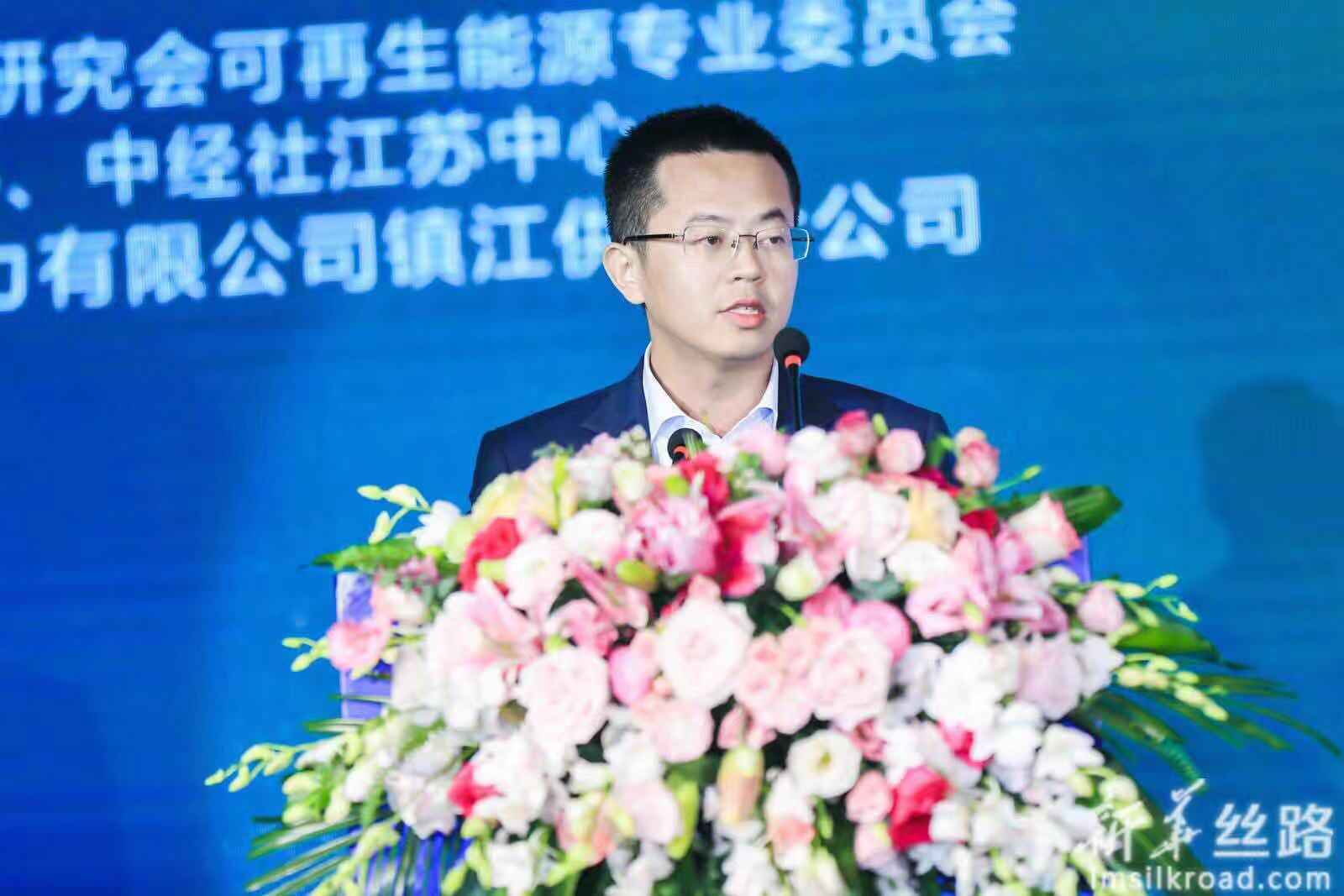

Yang Qi Host
Zhang Ziyang:
At present, State Grid Zhenjiang Power Supply Company has completed the overall planning of the zone, and has confirmed the projects to be implemented in the first phase. Subsequent revisions will continue to be made and released to the public.
The total investment for the 19 projects in the first phase reach 753 million yuan, of which 306 million yuan is to be invested by the State Grid Zhenjiang Power Supply Company in infrastructure construction, (including 54.88 million yuan having been invested). Meanwhile, investment open to the public capital is 447 million yuan.
Upon the completion of the project, the installed capacity of clean energy in the region will increase by 149 percent; the proportion of electricity will rise from 25.6 percent to 95.5 percent; the carbon emission index in the region will decline by 47.7 percent; the proportion of clean energy will significantly increase and the energy structure will be more reasonable.
It’s expected to further promote the upgrading and development of local industries such as photovoltaic power generation, energy storage and intelligent equipment.

Yang Qi Host
Shi Yubo, Executive Vice Chairman of China Energy Research Institute and Former Deputy Director of the National Energy Administration, is giving a speech titled Integrated Energy System Construction and High Proportion of Clean Energy City Development.
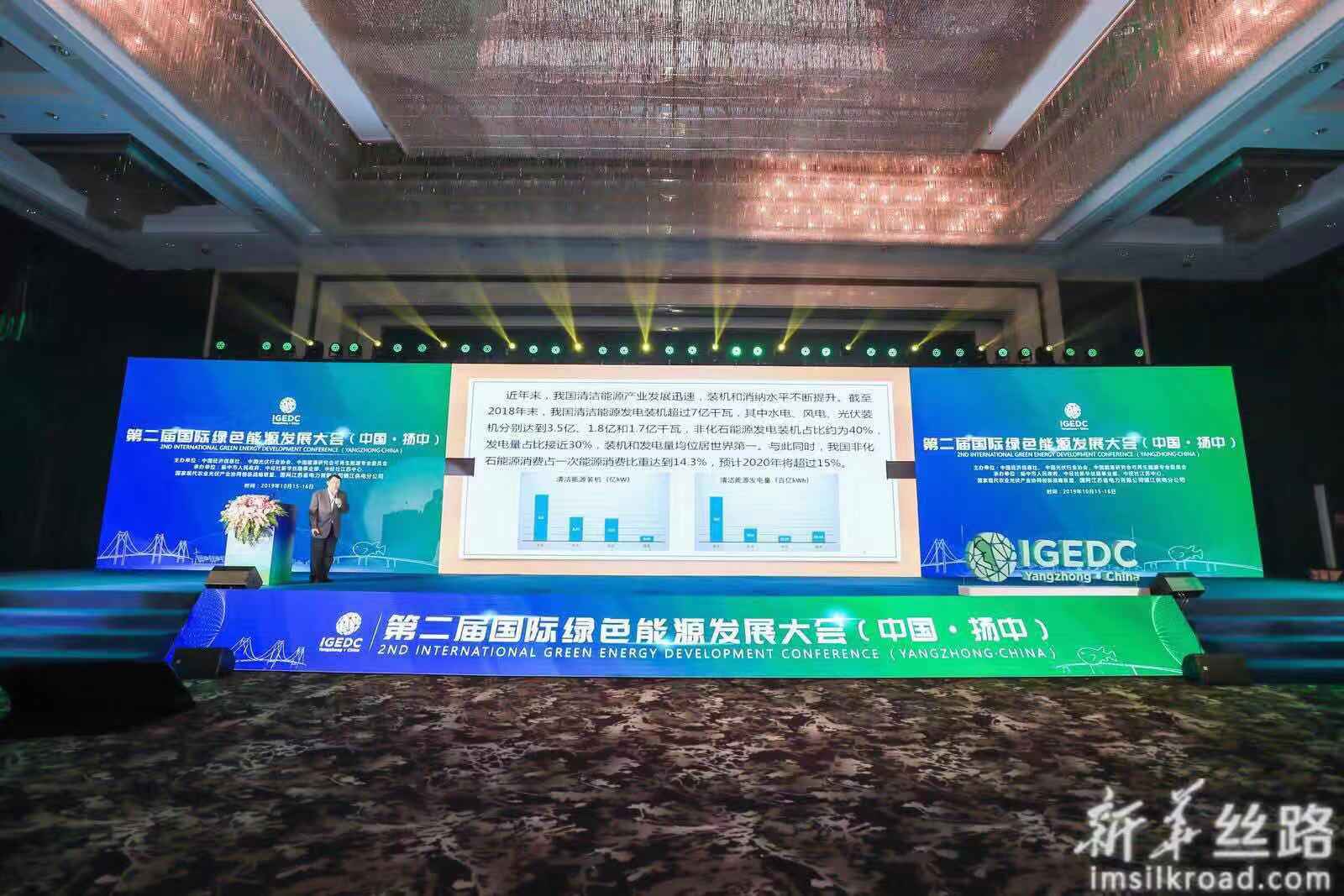

Yang Qi Host
Shi Yubo:
Relying on the establishment of an integrated energy system to increase the proportion of renewable energy is a feasible way to realize the transformation of China's energy system.
Despite remarkable results China's clean energy industry has achieved, a series of problems is still facing the industry, for example, insufficient resources for shifting peak load in the system, deficient grid's capacity to deliver power needs, and imperfect market-oriented trading mechanism.
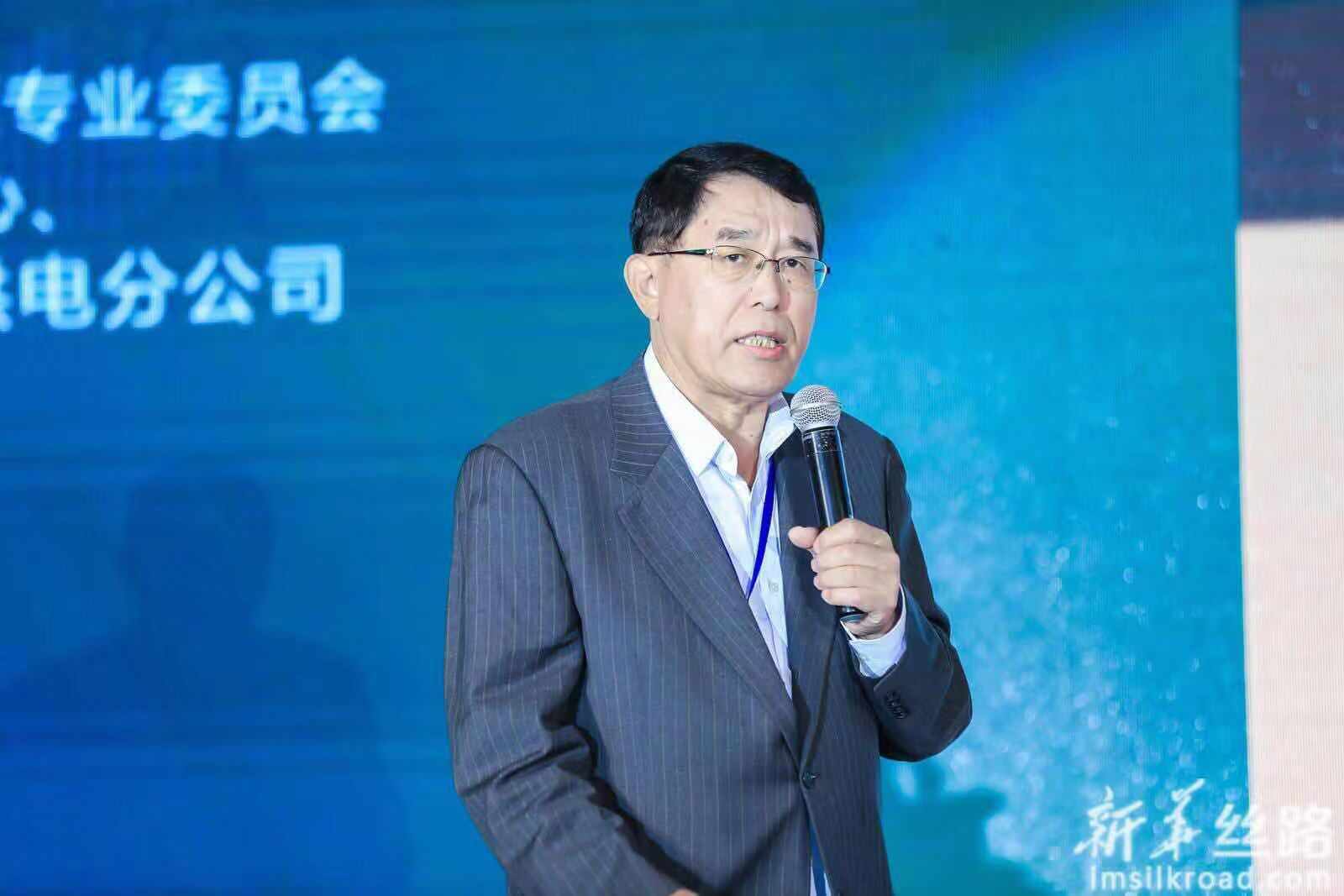

Yang Qi Host
Shi Yubo:
In the process of constructing renewable energy demonstration cities in China, the following two development routes should be followed:
First, we should actively promote the comprehensive utilization of various new energies such as solar energy, geothermal energy, biomass energy and wind energy. Overall plans for energy demand such as electric heating and cooling should be made to give full play to the role of new energies in electricity generation and heat supply, and promote new energies to replace traditional energies.
Second, we should combine the strategic opportunities of new urbanization, power system reform, industrial structure upgrading and "Internet plus", so as to explore innovative development mechanisms for green electricity trading, comprehensive energy services and energy Internet.

Yang Qi Host
Shi Yubo:
There are several suggestions on building an integrated energy system and cities with high proportion of renewable energy
First, a regional integrated energy system should be constructed starting from energy consumption terminals.
Second, integrated energy systems should be built based on development of distributed energy, energy storage technology and smart microgrid.
Third, cooperation with universities and scientific research institutions should be strengthened.

Yang Qi Host
Michio Kondo, Director of Fukushima Renewable Energy Institute, is giving a speech titled Renewable Energy and its Storage for Sustainable Society: Recent Activities in FREA.
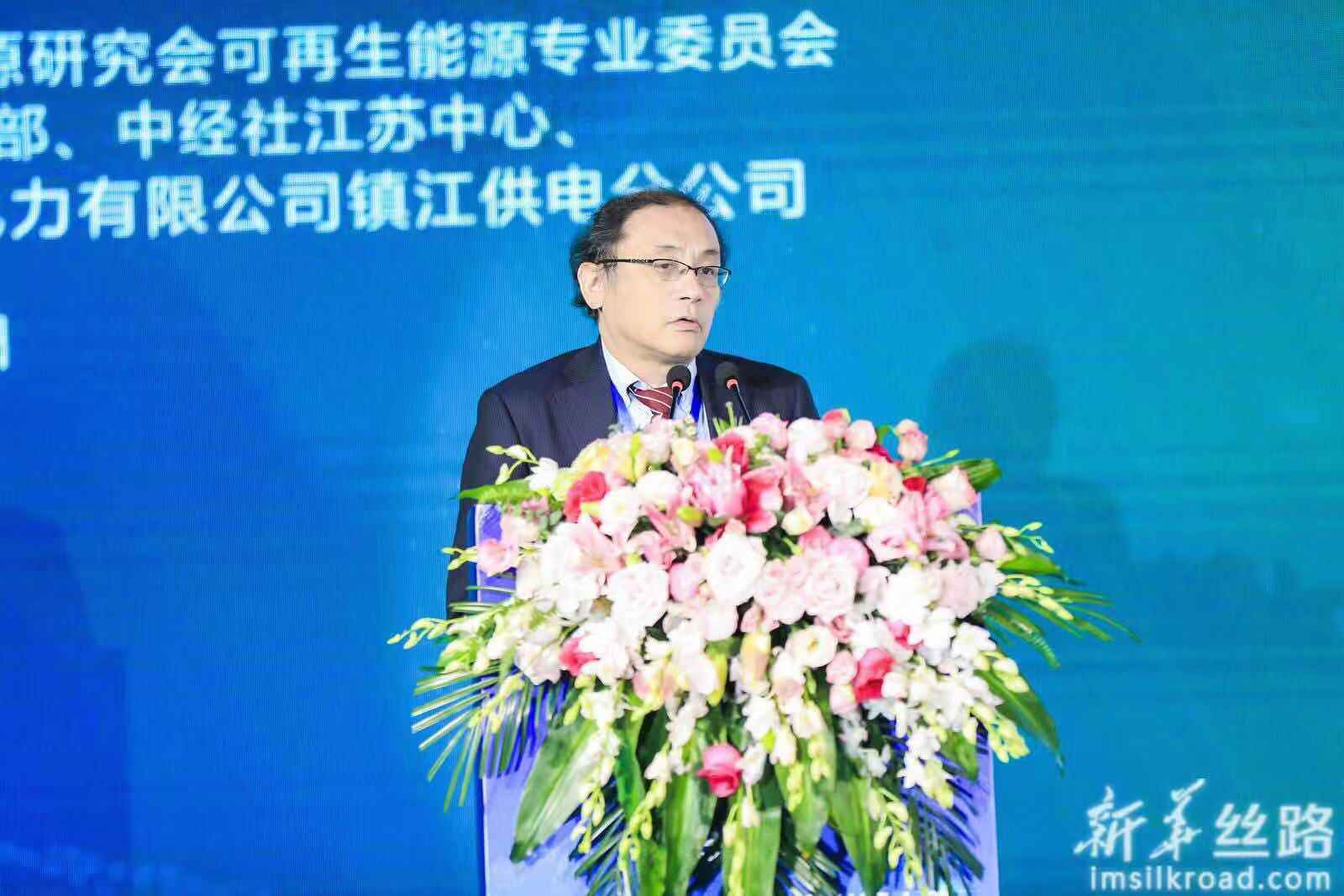

Yang Qi Host
Michio Kondo:
Established in 2014, Fukushima Renewable Energy Institute (FREA), AIST aims to be a global innovation hub concerning renewables. FREA also contributes to revitalize the affected area, by developing new industries and human resources.
Technical barriers for deployment of renewable energy lie in two categories, which are real capacity of production and installation and harmonization with utility grid.
New markets for PV industry including agriculture PV, building integrated PV, floating PV and future vehicle powered by solar energy.

Yang Qi Host
Michio Kondo:
Hydrogen is a possible solution for energy storage.
The new 10,000 kW class hydrogen production facility in Fukushima with world largest electrolysis will start supplying hydrogen in 2020.
FREA is going to open Commercial H2 station using RE H2 with local LPG Company (Applo Gas Co.).
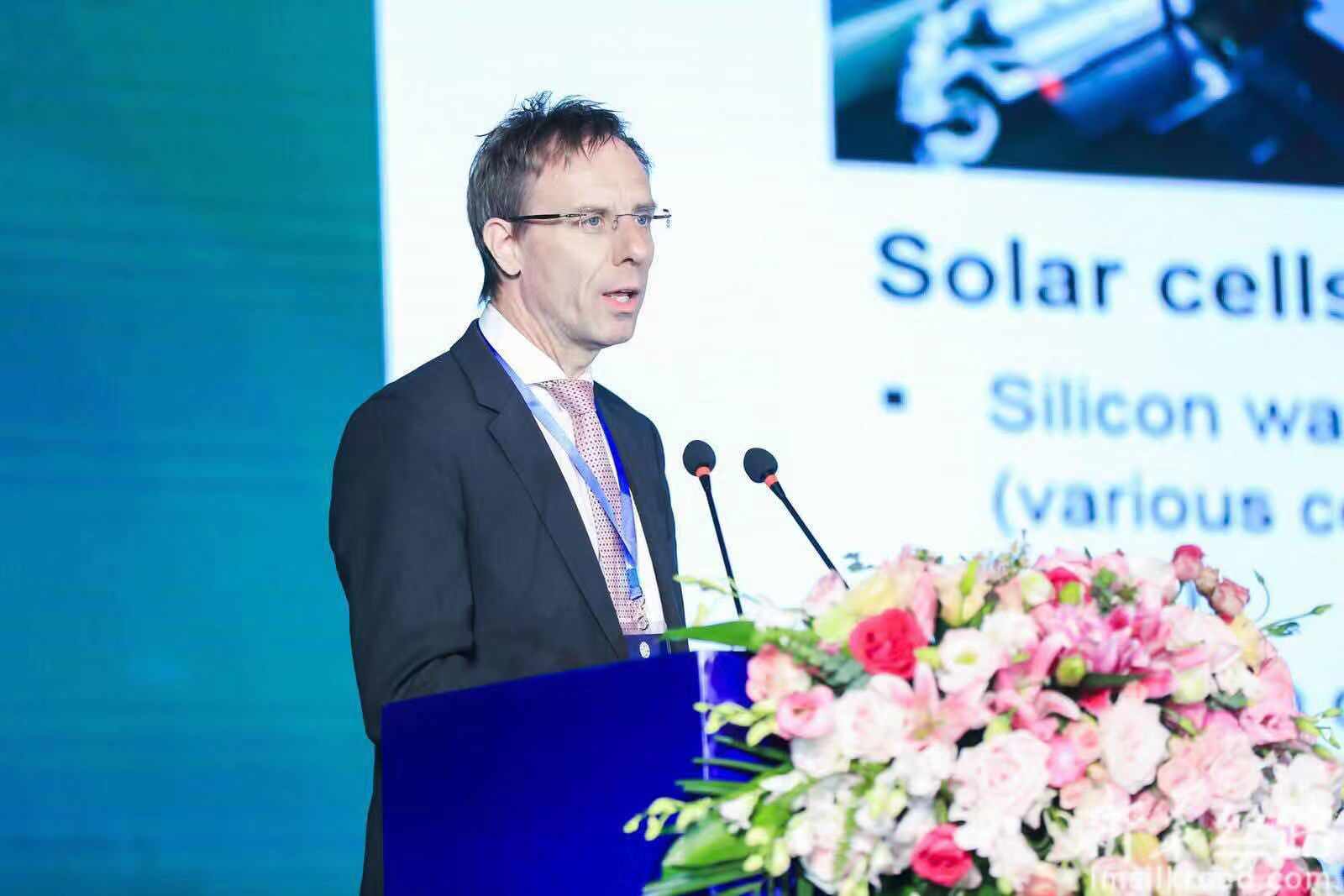

Yang Qi Host
Thomas Reindl, Deputy CEO of the Solar Energy Research Institute of Singapore (SERIS), is giving a speech titled the Solarisation of Singapore: How to Deploy PV in a Megacity.

Yang Qi Host
Thomas Reindl:
Founded in 2008, Solar Energy Research Institute of Singapore (SERIS) is a part of the National University of Singapore. It focuses on applied solar energy research, with state-of-art laboratories and specialized in professional services for the PV industry. SERIS’s R&D focus is on solar cells, PV modules and PV systems.

Yang Qi Host
Thomas Reindl:
PV is the most promising renewable energy source for Singapore among others.
The National Solarisation Centre (NSC) under the SERIS aims to support the large-scale deployment of solar photovoltaic (PV) systems in Singapore, including a central information platform, National Solarisation Center (NSC), where general knowledge about PV can be found and crucial data of PV systems operating in Singapore.
The NSC conducts solar potential analysis, which makes full assessment of the potential of solar power in Singapore through aerial view data, which will eventually be provided to the general public

Yang Qi Host
Thomas Reindl:
Another activity of the NSC is floating PV test-bedding, which explores the use of inland water reservoirs for PV system deployment to provide additional solar capacity. The research includes side-by-side comparison of major commercial floating PV technologies, detailed monitoring of all floating PV systems, economics (levelized cost of energy, LCOE) and environmental impact.
The first off-shore FPV project in Singapore is the 5 MWp project near Woodlands by Sunseap.
It’s likely world’s largest offshore floating PV system, with a size of 5 football fields, supported by the Singapore EDB.

Yang Qi Host
Thomas Reindl:
NSC’S research on Building Integrated Photovoltaics (BIPV) covers integration of BIPV at initial design phase is crucial for optimal performance, integrating BIPV modules with advanced building construction technology, precast and prefabricated construction technology and prefabricated Prefinished Volumetric Construction (PPVC) technology.
Main R&D areas of COE for BIPV include BIPV technologies/products, sustainable built environment & districts, and BIPV financing.

Yang Qi Host
Albert Y. Zomaya, Academician of Academia European, Director of the Centre for Distributed and High Performance Computing at the University of Sydney, is giving a speech titled the Powerful Forces Driving Sustainability: A Computing Perspective.

Yang Qi Host
Albert Y. Zomaya:
Sustainable computing aims to reduce the growing ICT carbon footprint by reducing the energy consumption of computing devices and sustainable ICT technologies will be used as enablers to reduce the carbon footprint of production and energy consumption by society.
AI at edge computing helps find timely and accurate identification of PV module defects to ensure adequate lifetime of PV modules as well as safe operation of large-scale PV farms.
In smart home, appliance scheduling can reduce the electricity bill of each household by shifting energy demands from peak hours towards off-peak hours, and meanwhile automatically determining a cost-efficient working mode for each appliance.
Green energy integration of a smart home uses solar energy to help support the running of IoT applications with energy-hungry smart appliances in households. Load determination and scheduling techniques are used to maximize the use of solar energy harvesting from the ambient environment to minimize the tariffs.
Sustainable computing is the ideal application domain of the IoT+AI+Edge Computing.


Yang Qi Host
Li Zhenguo, Founder, CEO of LONGi Green Energy Technology Co., Ltd., is giving a speech titled Photovoltic+Energy Storage Must be the Solution for Future Human Energy.

Yang Qi Host
Li Zhenguo showed a video about LONGi's Solar for Solar project.

Yang Qi Host
The film about the PV public welfare program in Zhenba County “Innovation Empowers the Future” is being played. (The program won the first prize of the IEEE Empower a Billion Lives-Pacific Asia)
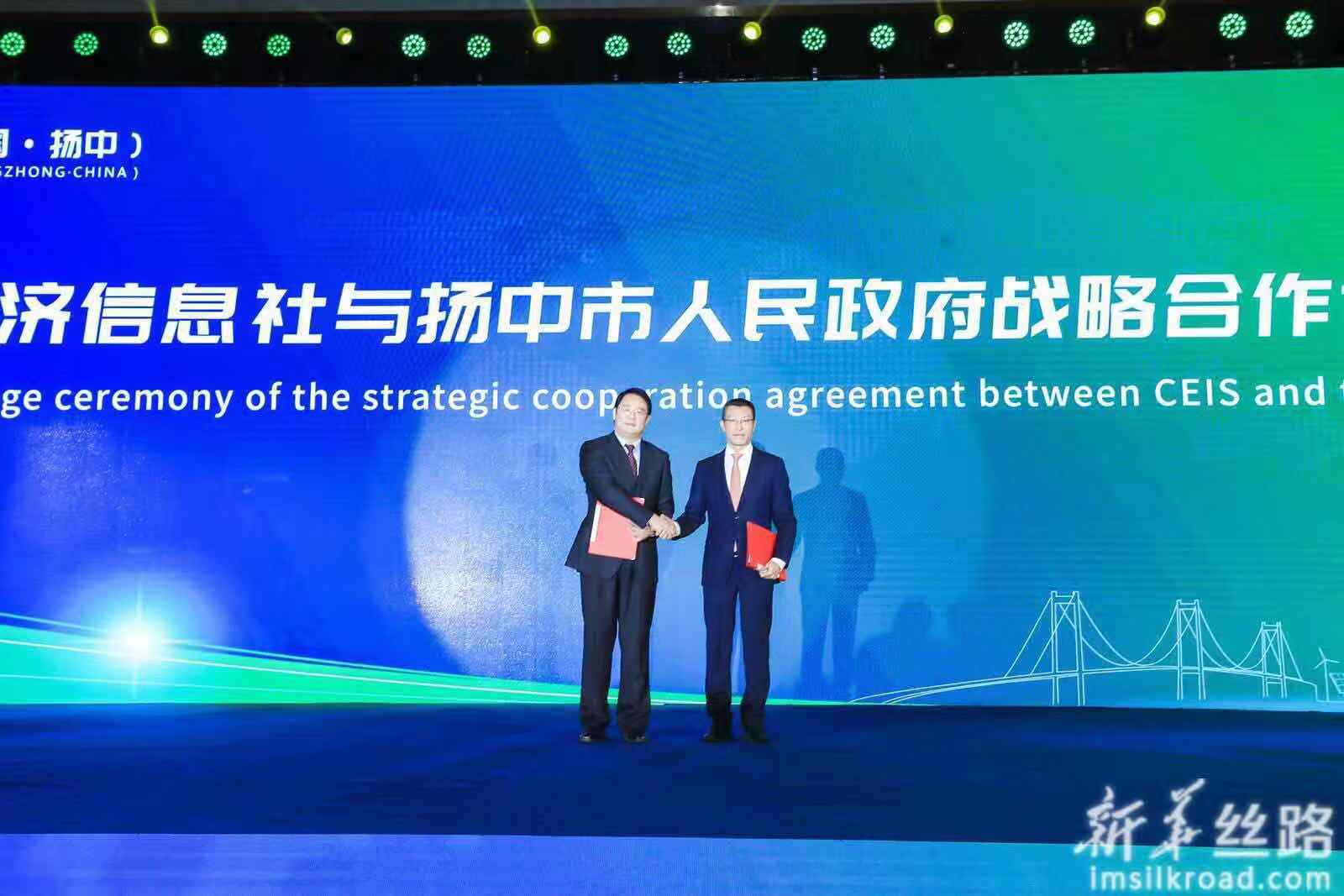

Yang Qi Host
The copy exchange ceremony of the strategic cooperation agreement between CEIS and the People’s Government of Yangzhong.

Yang Qi Host
We have come to the end of the main forum, and sub-forums of the conference will be held this afternoon. Please visit our special page of the conference for more information https://www.imsilkroad.com/z/190925/12.shtml#g308506=1
-

Yang Qi

